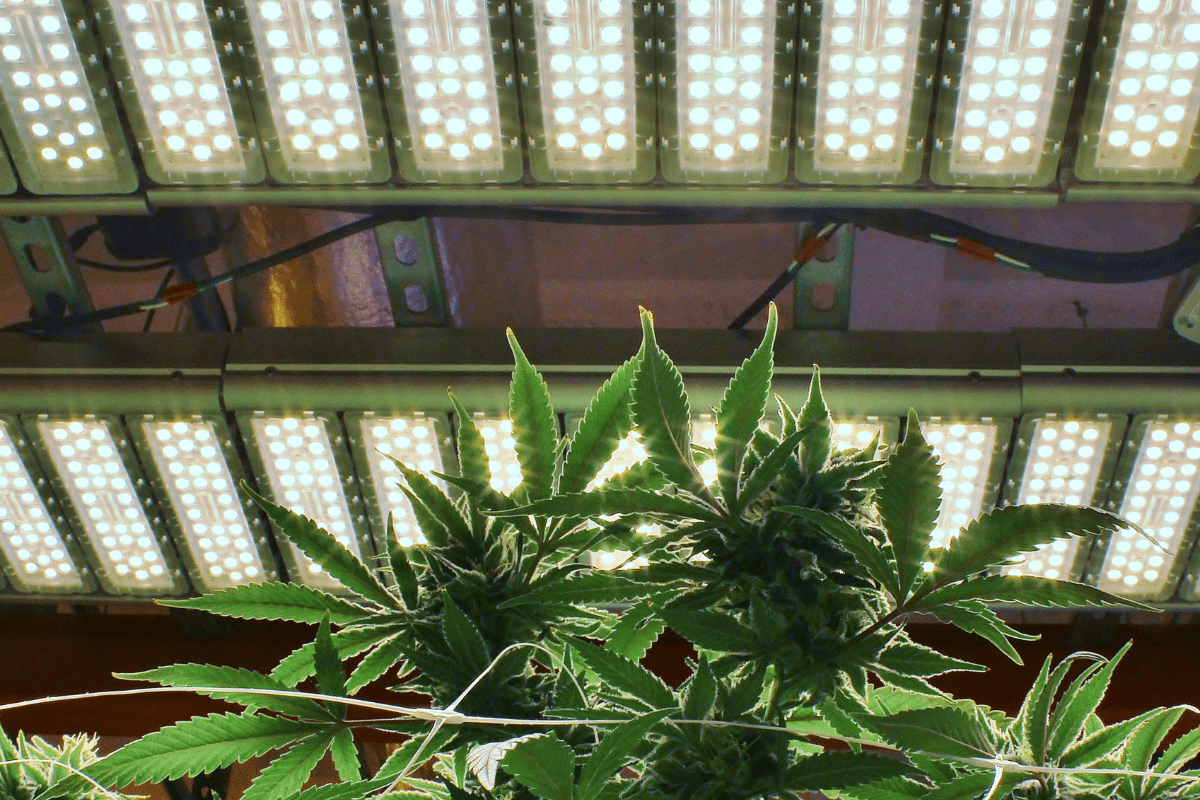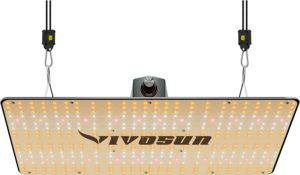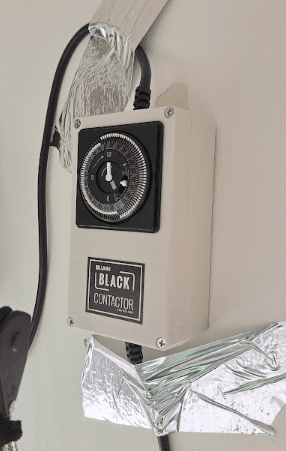If you are growing cannabis plants indoors, you’ll hear a lot about light cycles. What are they?
The cannabis light cycle means how many hours of light the plant gets. Different light cycles trigger different stages of growth.
But we know you want to know more than that about weed light cycles. Let’s dive in.
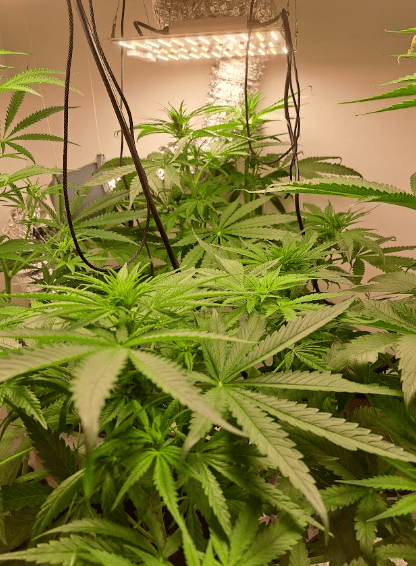
An Overview of the Light Cycles of Cannabis Plants
Before we explain why the light cycles are the way they are, here’s the quick and dirty. Germinating seeds don’t need light. Seedling and vegetative plants can get 16-24 hours of light, flowering cannabis should get no more than 12 hours. The main light differences occur between the vegetative and flowering stage.
Now, this depends on whether you’re using feminized seeds, which are photoperiod plants, or autoflower seeds.
What Is Photoperiod Cannabis?
Cannabis is naturally a photoperiodic plant. It only flowers when it gets a certain time of continuous darkness. Cannabis is a short-day plant. This means it needs more than 12 hours of uninterrupted darkness in order to form flowers. Other plants of this variety include chrysanthemums, poinsettias, and other spring and fall flowers.
However, many growers opt for autoflower cannabis. This is cannabis that has been crossed with hemp that will begin flowering due to its genetic schedule and is unaffected by light. These are faster and easier to grow. Most growers who are growing indoors like that they are smaller and faster.
That said, this blog has a strong preference for regular cannabis plants. Why? Because autoflower gives you less potent buds and smaller yields. Yes, they grow faster. But you can also make photoperiod marijuana plants grow faster by changing the light cycle.
With photoperiod marijuana plants, you can control how long your plant stays in the vegetative stage. If you’ve gone to the trouble to set up a grow room, you might as well go for a photoperiod. With a shortened vegetative stage, it only takes about 2 weeks longer than an autoflower and gives you a bigger yield with better buds.
Germination and Seedling Light Cycle
For the germination stage, you don’t need any light. They like moisture and warmth, so most people take a wet paper towel and stick their seeds in the sun. But if it’s the dead of winter, you can put it kind of near your heater, it’s fine. A cannabis seed is meant to be buried, they don’t need light.
Once you start seeing the first little proto-leaves, then it needs light. In terms of your light cycle, there isn’t much difference between the seedling stage and the veg stage. The real difference between these stages is in the nutrients, the vegging plant will need a lot more nitrogen than your seedling. But in terms of light, treat it just like a vegging marijuana plant and give it more than 12 hours of light.
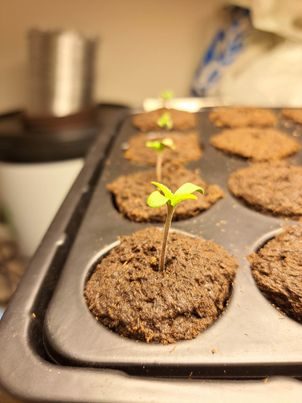
The Vegetative Light Cycle
This is the second stage of growth. Marijuana plants in the vegetative stage need more than 12 hours of light. The optimal light cycle for the vegetative stage is 18 hours on, 6 hours off. However, you can give them 24 hours of light, most people choose not to.
There are a couple of reasons for this. The first one is that electricity costs money. It’s simply more cost-effective to turn your lights off for 6 hours every day. The second reason is old-school high-pressure sodium grow lights generate a lot of heat. If you don’t turn it off, your grow room can get overheated.
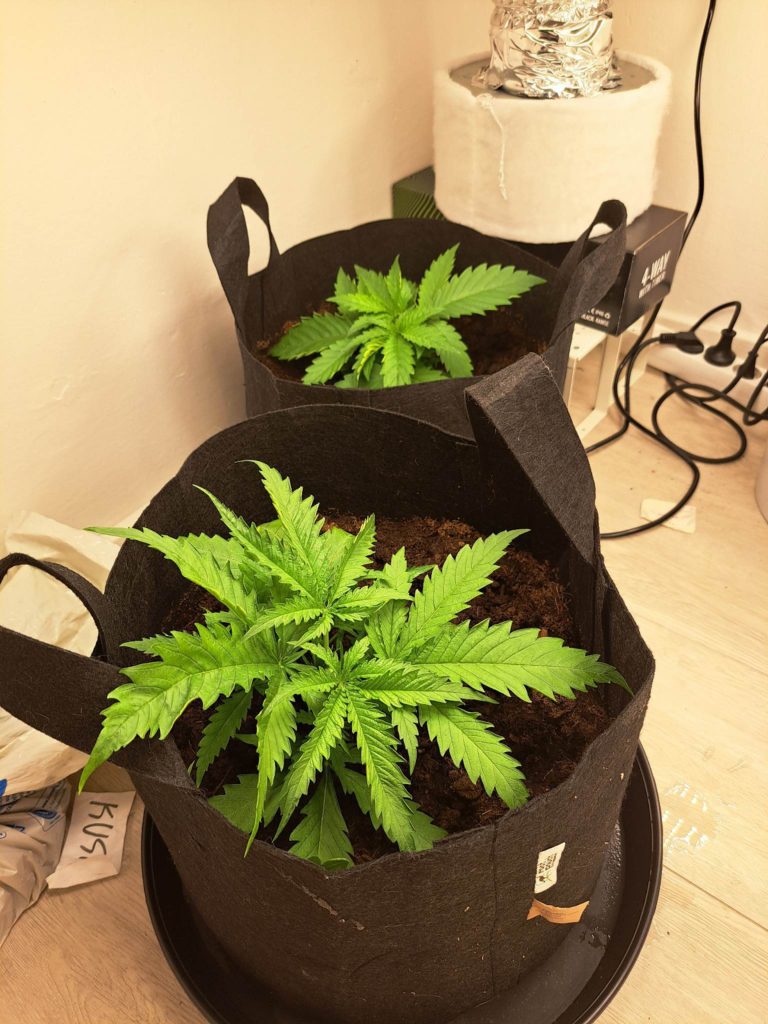
That said, for a vegging plant, there really is no such thing as “too much light.” 24 hours of light will promote faster vegetative growth. If you’re aiming to shorten this growth phase, you might prefer a 24-hour marijuana light cycle for the vegetative phase. This will help it transition to the flowering stage quicker.
Spectrum and Intensity
It’s really easy to lose the forest for the trees when talking about spectrum. So in order to keep this all in perspective, think about the marijuanna plants natural light source: the sun.
The sun gives full spectrum light that is more blue when it’s directly above your head, and more red when it’s at an angle. So late summer and fall have more red light, midsummer has more blue. Now, it just isn’t possible to put the sun in a light. We make up the difference by adjusting the wavelengths during different grow phases.
Germinating cannabis seeds do not need any light, but especially avoid blue. This can prevent germination. Give seedling and vegging cannabis prefer more blue light between 400 and 500 nm. Blue light triggers chlorophyll production, which is what it uses to create branches and leaves. LED lights typically come with light spectrum adjustments. If you’re using bulbs, go for a high-pressure sodium light, it has more blue.
When it comes to the intensity of your grow light, there is such a thing as too much light. The measure of light is the photosynthetic photon flux density (PPFD). The ideal PPFD for the vegetative part of the life cycle is 300-600 µmol/m²/s.
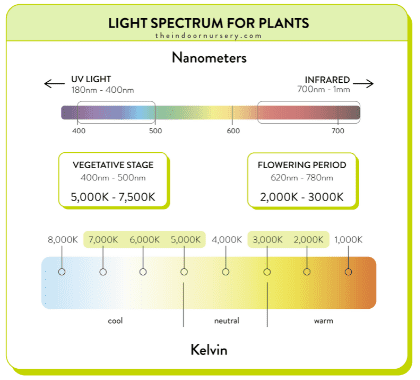
Now, if those last sentences had you scratching your head, we feel you. In most grow lights, this is about 70%, but check the manufacturer’s website. This part also gets tricky because the top of the cannabis plant gets more light than parts that get shaded over. It can be hard to ensure all of the plant gets even light. This is the stage of cannabis growth where some people like to try growing techniques, like topping, so it gets an even light saturation.
Pro tip #1: Even if you plan to shorten the vegetation stage, don’t immediately go from seedling to flowering. This is an important part of plant development where it creates its root system and branches that support the buds. If you don’t give your plant enough veg time, it can collapse.
Pro tip #2: Where you hang your lights is important in the veg stage. If you keep them too far from your cannabis plant, they will stretch to reach the light. If it’s too close, you’ll burn the plant. If you’re using LED lights, put them at most 12 inches above your plant. If you’re using a bulb, keep it 12-24 inches away to prevent burning.
The Flowering Light Cycle
Outdoor plants will begin the flowering cycle after the summer solstice. Indoor growers can trigger flowering by giving the plant 12 hours of darkness. Here, most people go for a 12/12 light cycle.
Now, there are ways to begin the flowering process even if you’re growing outdoors in the middle of summer. One strategy is putting your cannabis plants in pots, which you can move inside to give them more hours of darkness. Beware of light leaks, this can prevent flowering.
Spectrum and Intensity in the Flowering Stages
Again, the sun naturally gives plants the entire spectrum of light, with more red wavelengths in the fall. For this reason, flowering plants prefer red light, specifically 660nm. Here’s where you adjust your LED lights or change out your high-pressure sodium bulb with a metal halide bulb.
In the first stage of the flowering cycle, the cannabis plant nearly doubles in height. Even though this looks like it’s still vegging, keep it under light deprivation and start moving towards more-red light. Red promotes the chemical reaction to produce buds, blue encourages leaf production.
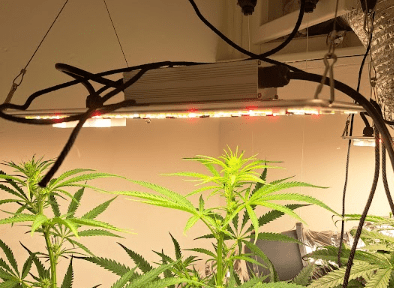
Side note: If you only have one type of bulb, you can use a high-pressure sodium bulb for flowering, it will not prevent the flowering cycle. The most important part of the flowering period is those hours of darkness. Red light does give you better buds since it encourages marijuana plants to grow flowers instead of leaves.
In terms of light intensity, the flowering stage is 600 µmol/m²/s. This is probably as bright as your lights can get. Also, if you are growing multiple marijuana plants, use a shelf to boost up the shorter plants.
The Best Lights For Indoor Growing
So we’ve been going on a bit about lights, which ones are best? Now, we’ve got recommendations. But no matter where you’re shopping, LEDs are better than bulbs. They are more energy efficient, cooler, provide more even light coverage, and most come with an easy spectrum adjustment.
There was a time when LEDs were a lot more expensive than high pressure sodium lights, that just isn’t the case anymore. Even though LEDs tend to come with a higher sticker price, they last years, whereas the bulbs last months.
Pro tip: Get a light timer to go in your tent. The cost is fairly low and it makes maintaining your light schedule a lot easier.
FAQ
Can I keep my plant on a 12/12 light cycle for all growth stages?
Yes, some growers prefer to do this. It’s best for autoflower and/or the sea of green growing techniques. However, for the maximum yield from a single plant, you need to use different light cycles for different growth stages.
Can I put a cannabis plant in the flowering stage back into the vegetative stage?
Yes, by switching the light schedule back to over 12 hours, it will stop developing flowers and re-enter the vegetative stage. It just doesn’t produce very good weed.
What are the best cannabis light cycles?
It needs a different light cycle for different life stages. No light for germination. Seedlings and vegging plants get 18/6, and switch to 12/12 for the flowering stage.
More about cannabis
- How To Treat A Magnesium Deficiency In Cannabis
- It’s Not O-K: Potassium Deficiency in Cannabis
- How to harvest cannabis (and use the entire plant)
- Male Weed Plant Stages: Don’t Ruin Your Crop
- How To Decarb Weed For Homemade Cannabis Products
- Loving the Ladies: Female Weed Plant Stages
- Patience is a Virtue: Curing Buds for Best Taste
- Understanding weed light cycles: Get the most from your harvest
- When to switch to flower nutrients for high cannabis yield
- How to make live resin at home, step-by-step

